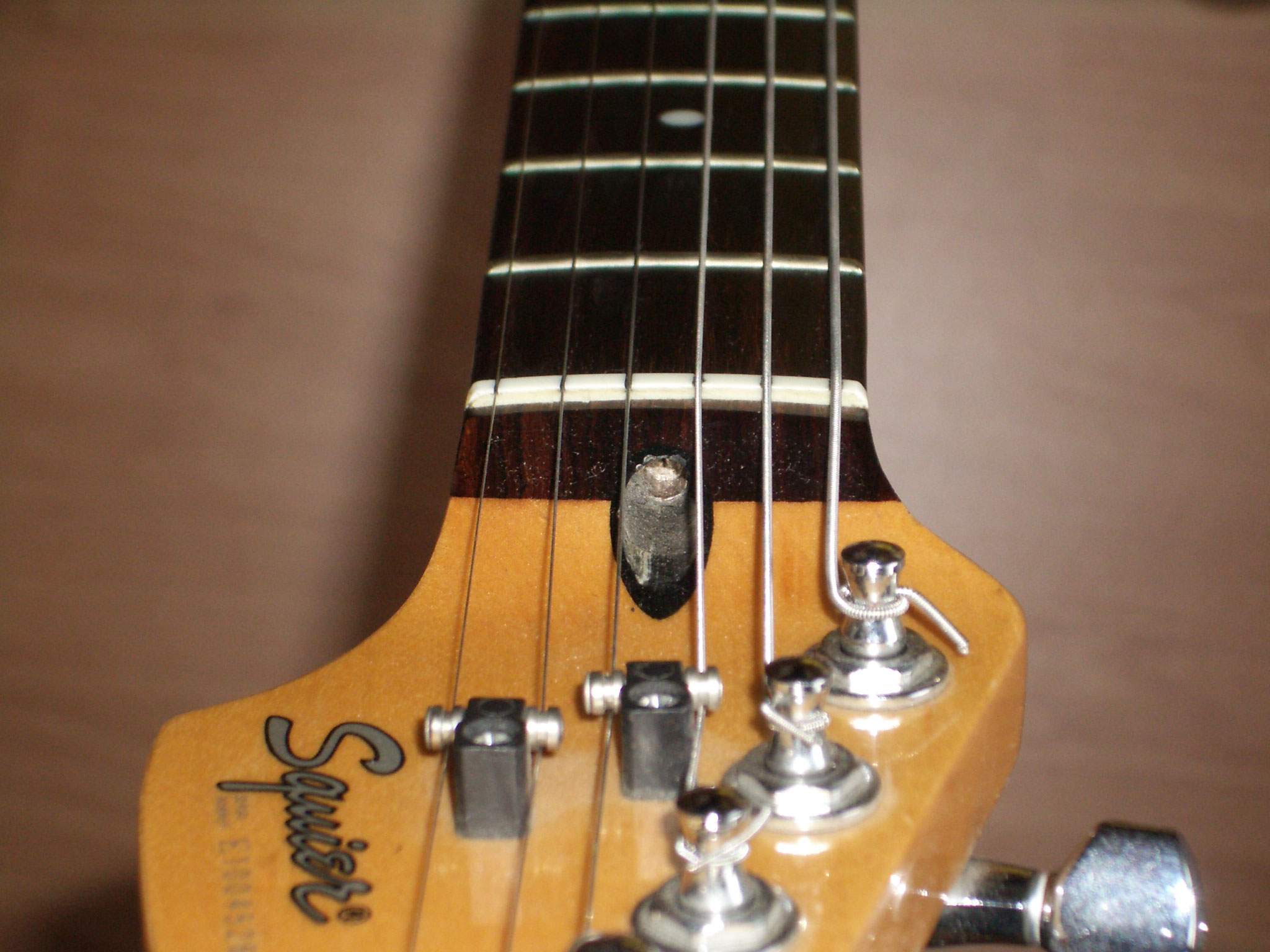That frustrating, tell-tale buzz. You know the sound.

Whether it’s an open string ringing sour or a note dying out on the fretboard, persistent fret buzz is a common plague for guitarists. It ruins tone, compromises playability, and can drive even the most patient musician to distraction.
The main culprits are almost always frets that are either too high or too low. Pinpointing the exact offender, however, can feel like a game of whack-a-mole. You could end up chasing your tail, taking material off one fret only to find the next one is now wrong. It would be a nightmare pursuit trying to guess and play around with it.
For the serious hobbyist aiming for professional results, precision matters. This guide introduces the Fret Rocker, an essential tool for accurately diagnosing fret issues, and arms you with the knowledge to silence that buzz for good. You’ll gain the confidence that your guitar will play properly, and you can’t blame it for your bad playing!
🎦 The Master’s Approach: Dan Erlewine and the Fret Rocker
When it comes to essential guitar setup and repair, Dan Erlewine from StewMac is the master. In this video, he demonstrates his “Fret Rocker,” an ingenious tool designed to quickly identify problematic frets.
Watch as he shows you the simple yet effective method for pinpointing the source of fret buzz.
✨ Engineered for Precision: What Makes the Fret Rocker Essential
The Fret Rocker is a small, precision-ground straight edge specifically designed to quickly pinpoint high or low frets. Its method of use is deceptively simple: you span three frets at a time. If the tool rocks, you’ve found a problem area. But its true genius lies in its engineering:
- Multiple Lengths: The Fret Rocker comes in short, medium, and long lengths, allowing it to accurately span three frets anywhere on the neck – from the narrowest spots near the nut to the wider areas over the body.
- Unmatched Accuracy: These lengths are precision-ground to within **1 and a half thousandths of an inch**. This extreme accuracy is what separates it from improvised tools, ensuring your diagnosis is reliable.
- Diagnostic Power: When the tool rocks, it indicates a problem with one of the three frets it spans. As Dan notes, “the chances are 50:50 each way” that it’s either a high fret or a low fret *next to* the point of contact. This precision tells you *where* to investigate further, rather than just guessing.
This tool is so reliable it’s used on valuable instruments, including vintage guitars like the 1959 Gibson ES-125T (as seen in the video). This communicates a clear message: if it’s good enough for an expensive, valuable, historic guitar, it’s certainly reliable for yours.

💰 Precision vs. Penny-Pinching: The Fret Rocker’s True Value
Many hobbyists consider alternatives like credit cards or homemade metal straight edges to check for high frets. While these DIY methods might offer a quick, low-cost starting point, they come with significant risks.
A homemade tool could be out of tolerance, not perfectly flat, or could even introduce inaccuracies if you don’t know exactly what you’re doing. This can lead to inaccurate measurements and sloppy fret work, wasting your time and potentially damaging your instrument.
For the serious hobbyist who values their time and strives for professional results, investing in a high-quality, purpose-built tool like the StewMac Fret Rocker is a “buy once, cry once” decision. It guarantees precision and consistency, eliminating guesswork and significantly reducing the risk of errors. The confidence you gain from knowing your diagnostic tool is perfectly accurate is invaluable.
Ensure your fretwork starts with precision: StewMac Fret Rocker (Amazon).
🔧 Beyond Detection: Your Next Steps to a Buzz-Free Neck
Identifying a problem fret with the Fret Rocker is the crucial first step. To completely eliminate the buzz, you’ll need to follow up with a few more precise operations:
- Leveling:
The identified high or low fret (or frets) needs to be carefully leveled to match the height of its neighbors. This often involves a precision filing tool. - Crowning (Reshaping):
Once the fret is level, it must be reshaped to its proper “crown” profile. This is vital for proper intonation and preventing string contact across too wide an area. A specialized crowning file is essential for this. We recommend the StewMac Compact Z-File Guitar Fret Crowning File (Amazon) for its efficiency. - Polishing:
Finally, the frets must be polished to a smooth, mirror-like shine. This removes any file marks and ensures effortless string bending and vibrato. Always use fret protection like the StewMac Fingerboard Guards (Amazon) to protect your fretboard during these steps.
🏆 The Payoff: Play with Confidence, Craft with Precision
Eliminating fret buzz transforms your playing experience, allowing your guitar to truly sing. The Fret Rocker empowers you to diagnose problems with absolute confidence, setting the stage for precise, effective repairs. The satisfaction of doing this work yourself, knowing your guitar plays perfectly because of your own accurate efforts, is immeasurable. It’s a testament to your mastery and dedication as a craftsman.
What’s your most stubborn fret buzz story, and how did you finally silence it? Share your experience below.






